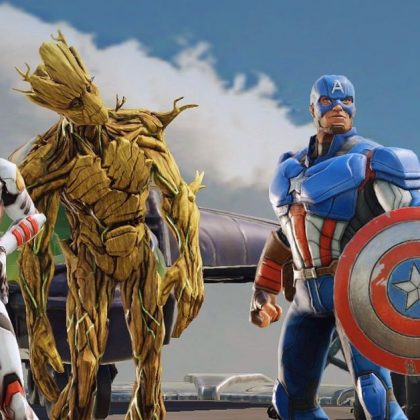Sickly green light washed over the stubble and pale complexion of the man hunched in front of his computer monitor. Beside it sat a television, black except for five horizontal, crimson-colored bands running from top to bottom like lines on notebook paper.
Garry Kitchen closed his eyes, but the straight red lines were burned into the backs of his eyelids. Behind him came a steady pounding: pound—pound-pound-pound. He didn’t rise to the bait. He knew what he’d see. On the arcade cabinet’s screen, a giant ape the size of King Kong had just scaled a construction site made of straight red girders. With every stomp, the platforms had twisted and bent until they were slanted like ramps. Standing tall at the top, the ape intoned his grating, mechanical laugh.
Kitchen gritted his teeth. His replica of the construction site was almost perfect. Steel girders, a flaming barrel, a little man in red-and-blue overalls, an ape at the top.
There was just one glaring, maddening difference. His platforms refused to bend. That was going to be a problem.
Garry Kitchen watched the success of Mattel’s electronic games with interest. Just a few years ago he’d been a college kid chasing an art degree and working part-time at Wickstead Design Associates, a firm that built consumer products like calculators and other digital electronics.
“I ended up getting involved in microprocessor engineering because I kind of had to,” Kitchen recalled. “During this time period, I’d switched from art in school to electrical engineering. I was learning engineering on the job, so why not finish my degree in engineering? We were a small company, I got dragged into doing work of a much higher caliber out of necessity. There was one guy who could, but he wasn’t available.”
By 1978, consumer electronics were evolving from handheld electronics to Atari’s 2600 machine. While Atari had started out as the sole manufacturer of games for its console, Activision opened that December and developed games for personal computers and the 2600—a tacit admission to developers everywhere that anyone could write games for Atari hardware. Kitchen went to his bosses at Wickstead Design Associates and made his case.
“Look, electronic toys are being hurt in the marketplace by video games,” he said. They stared blankly. Video games? Kitchen pressed on: “Everybody’s jumping on this Atari thing. We should look into it.”
Kitchen asked around and received little feedback. Atari couldn’t stop Activision and other studios from making games for its device, but it didn’t have to help. There was no software development kit, no prototype console designed to write and test code. Activision’s founders only knew how to make games for the 2600 because they’d worked with it while at the company.
By that time, Kitchen had flipped his schedule, working at WDA full-time and taking engineering classes at night. He wasn’t making much money, pulling in $11,000 a year, but he enjoyed waking up every morning to solve new problems. Developing games for the 2600 was his latest and greatest challenge. Kitchen scraped together $1200 for an Apple II—the most expensive of 1977’s “holy trinity” of personal computers, including the Commodore PET and Radio Shack TRS-80—and dissected his new machine to learn its ins and outs. It ran on a 6502 8-bit processor, which he picked up on quickly having worked with microprocessors on electronic toys.
Once he wrote code, he knew he’d have to find a way to put it on an Atari 2600 cartridge. His solution was a custom-made board with a chip he’d soldered on to play Atari ROMs. Testing code required him to run a ribbon cable from the chip on his board to the teeth in the 2600’s cartridge slot.
Read More





